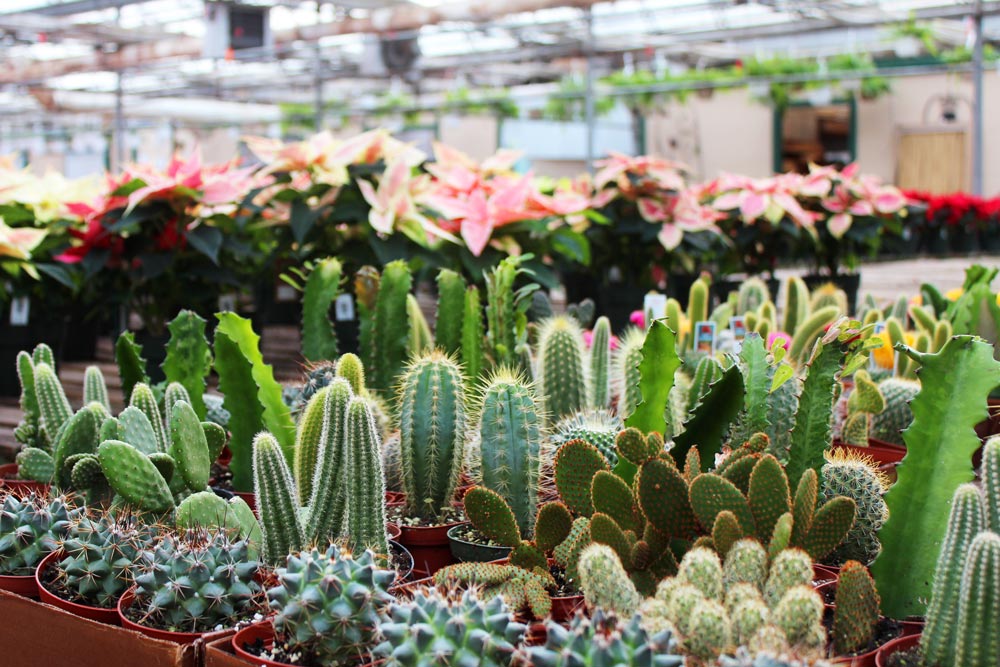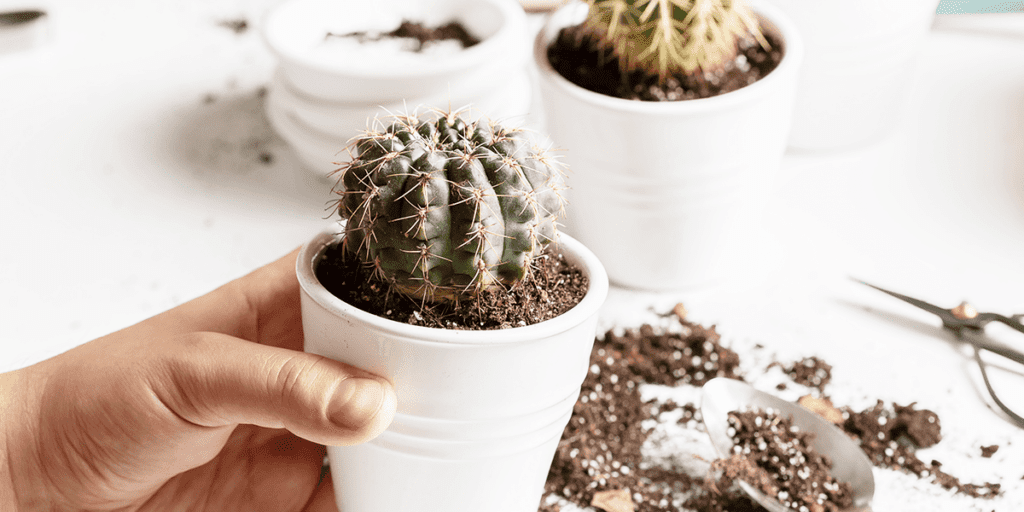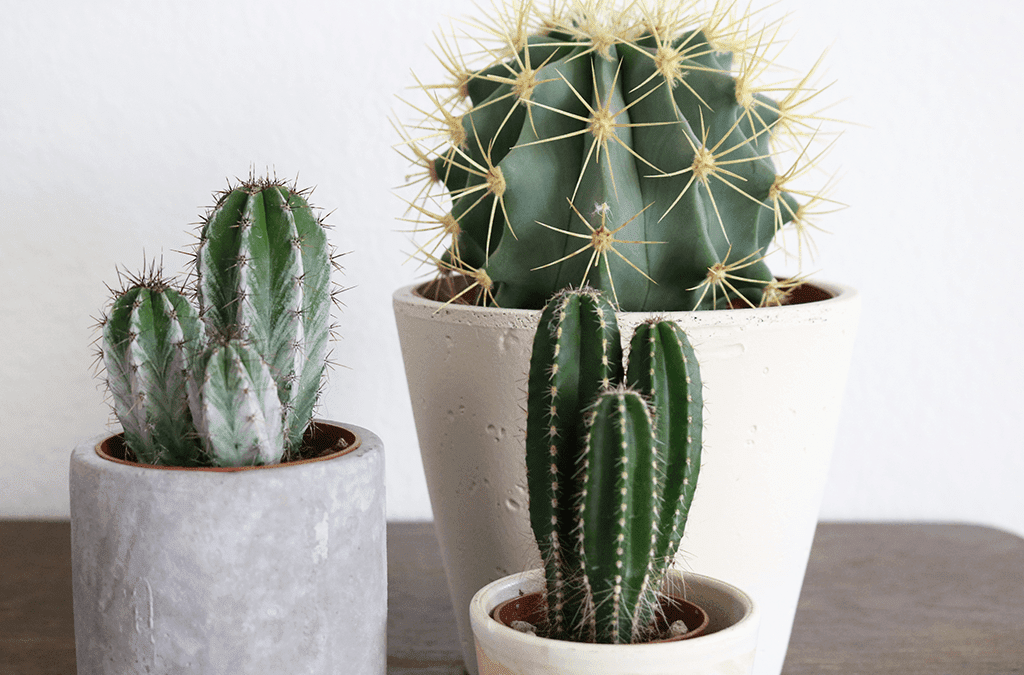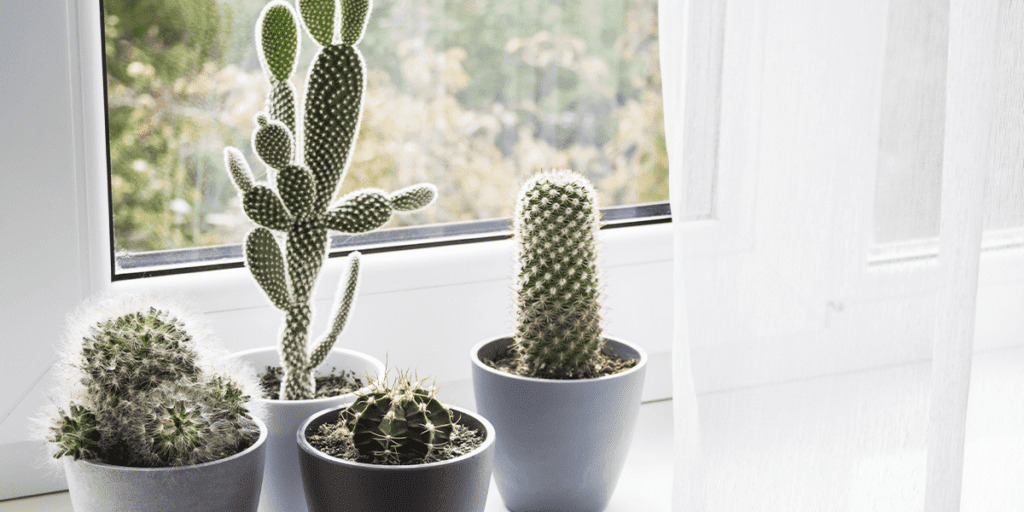Cacti are some of the most intriguing houseplants you can grow. With tough spikes, smooth skin, and blossoms coming out of nowhere, their personalities are unlike any plants we’ll find in Illinois. They have a reputation for being easy to care for, and even though that’s true, they still undergo important changes in the winter that we need to adapt to!

Know Your Cactus
When caring for any houseplant, it’s important to look up the care needs for that particular plant. This is especially true for cacti because there’s a lot of variability among plants called “cactus.” Generally, you’ll find two different types: desert species and forest dwellers.
- Desert cacti are the types of plants we imagine when we think of the word cactus. They grow upright, have spikes, and can survive harsh conditions.
- Forest dwelling cacti originate in subtropical forests, grow on trees, often don’t have spikes, and need wetter conditions. These plants have more in common with succulents.
Since we’ve already written about succulents, we’ll focus on desert cacti in this article.
How Often to Water Cactus in Winter
Overwatering is a main risk of cactus care in the winter, as it is in every season. As a rule, you should let the soil dry out completely in between waterings. If you see your cactus starting to pucker or harden, that’s a sign its water reserves are running low, and that you should water more often. Blackened stems or mushy leaves are signs of too much water.
Key Tip: Cacti don’t need water very often. But remember that when you do water, it’s important to water thoroughly.
Sunlight for Cactus in the Winter
Cacti thrive in bright light, but direct sunlight in the summer can scorch the leaves of some species. In the winter, the risk of sunburn is low, and the challenge is to give your cactus enough sunshine. To keep them happy, put your cactus near the brightest window you have. Discoloration or fading colors are signs of insufficient light.
Common Houseplant Cacti
- Bunny Ears Cactus: This beauty grows disc-shaped leaves covered in spikes.
- Cereus Cactus: They resemble the iconic cactus you’d see driving in the Southwest states or in a Western movie, except in a smaller houseplant version.
- Old Lady Cactus: A beautiful, ball-shaped cactus with hairy spikes and pink flowers.
- Blue Columnar Cactus: A classic pillar-shape cactus with green-blue flesh and columns of spikes.

Wait Until Spring to Repot a Cactus
In general, cacti are slow growers and only need repotting every 2-4 years. When roots poke through the bottom of the drain holes, you know it’s time to repot. But it’s best not to repot a cactus during their winter dormancy. Wait until the end of winter or early spring.
At the end of the day, winter cactus care is not that demanding. These tough plants are nearly self-sufficient during the cold months. As long as you reduce their water and still get them light, they’ll be happy. And for those simple tasks, they still give you all of their intriguing beauty during the winter just as they do anytime of year!
Platt Hill Nursery is Chicago’s premier garden center and nursery.



